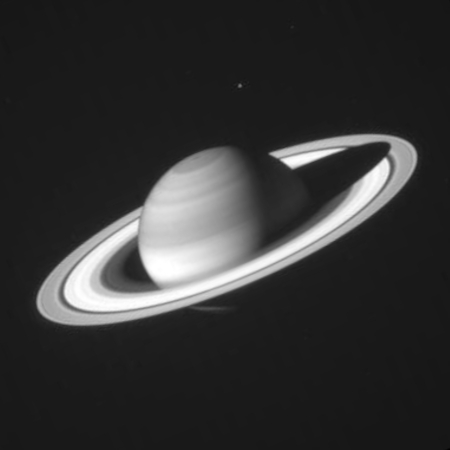Swarm satellite constellation detects changes in the Earth’s magnetic field during the past decade
The European Space Agency’s three-satellite Swarm constellation, designed to measure the strength of the Earth’s magnetic field at high resolution, has found that the field’s weak and strong regions have shifted and changed in the past eleven years, since the constellation was launched.
The map to the right shows the changes over the northern hemisphere, related to the movement of the north magnetic pole towards Siberia.
[S]ince Swarm has been in orbit the magnetic field over Siberia has strengthened while it has weakened over Canada. The Canadian strong field region has shrunk by 0.65% of Earth’s surface area, which is almost the size of India, while the Siberian region has grown by 0.42% of Earth’s surface area, which is comparable to the size of Greenland.
Similarly, the Swarm data has shown the South Atlantic Anomaly, a major weak area of the field above South America near the equator, has grown significantly eastward towards Africa. That change is important for satellite operations, as spacecraft passing through it experience higher levels of radiation.
All these changes are thought to be because of shifts within the Earth’s molten core from which the dynamo of the magnetic field is generated.
The European Space Agency’s three-satellite Swarm constellation, designed to measure the strength of the Earth’s magnetic field at high resolution, has found that the field’s weak and strong regions have shifted and changed in the past eleven years, since the constellation was launched.
The map to the right shows the changes over the northern hemisphere, related to the movement of the north magnetic pole towards Siberia.
[S]ince Swarm has been in orbit the magnetic field over Siberia has strengthened while it has weakened over Canada. The Canadian strong field region has shrunk by 0.65% of Earth’s surface area, which is almost the size of India, while the Siberian region has grown by 0.42% of Earth’s surface area, which is comparable to the size of Greenland.
Similarly, the Swarm data has shown the South Atlantic Anomaly, a major weak area of the field above South America near the equator, has grown significantly eastward towards Africa. That change is important for satellite operations, as spacecraft passing through it experience higher levels of radiation.
All these changes are thought to be because of shifts within the Earth’s molten core from which the dynamo of the magnetic field is generated.














